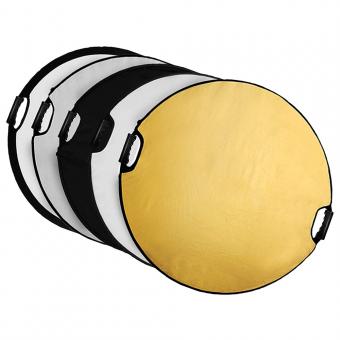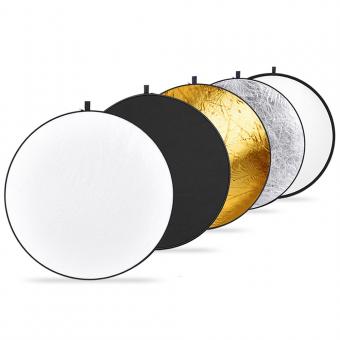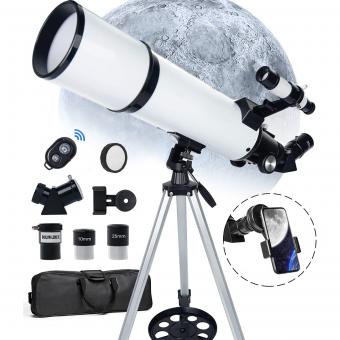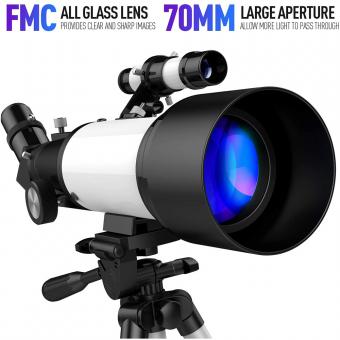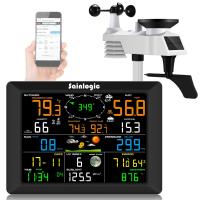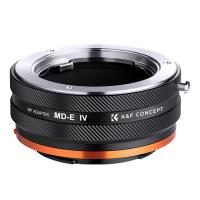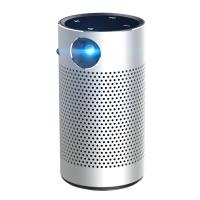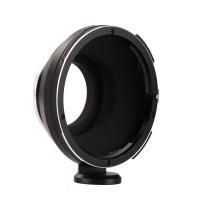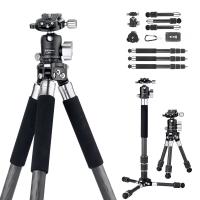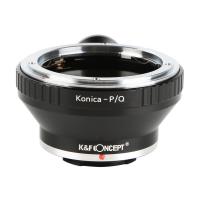Which Is Better Reflector Or Refractor Telescope ?
The choice between a reflector or refractor telescope depends on personal preferences and specific observing needs. Reflector telescopes use mirrors to gather and focus light, offering larger apertures at a more affordable price, making them suitable for observing faint deep-sky objects. Refractor telescopes, on the other hand, use lenses to gather and focus light, providing sharper and more contrasted images, making them ideal for observing planets and the Moon. Ultimately, the "better" option is subjective and depends on the observer's priorities and intended use of the telescope.
1、 Optical Design: Reflecting vs. Refracting
The debate between reflector and refractor telescopes has been ongoing for centuries, with enthusiasts and professionals alike weighing the pros and cons of each optical design. Both types have their own unique advantages and limitations, making it difficult to definitively declare one as superior to the other. However, it is important to consider the latest advancements and perspectives in order to make an informed decision.
Refractor telescopes, which use lenses to gather and focus light, have traditionally been favored for their crisp and high-contrast images. They are also relatively low-maintenance and require minimal adjustments. However, refractors tend to be more expensive and heavier for larger apertures, making them less accessible to amateur astronomers.
On the other hand, reflector telescopes employ mirrors to gather and focus light, offering larger apertures at a more affordable price point. This makes them ideal for deep-sky observations and astrophotography. Reflectors are also more compact and portable, making them popular among amateur astronomers.
In recent years, technological advancements have further blurred the lines between the two designs. Refractors have seen improvements in lens coatings, reducing chromatic aberration and enhancing image quality. Reflectors have benefited from innovations such as computerized tracking systems and lightweight materials, making them more user-friendly and versatile.
Ultimately, the choice between a reflector and refractor telescope depends on individual preferences and specific observing goals. Factors such as budget, portability, desired objects of observation, and level of expertise all play a role in determining which design is better suited for a particular user. It is advisable to consult with experienced astronomers, try out different telescopes, and consider the latest advancements in order to make an informed decision.
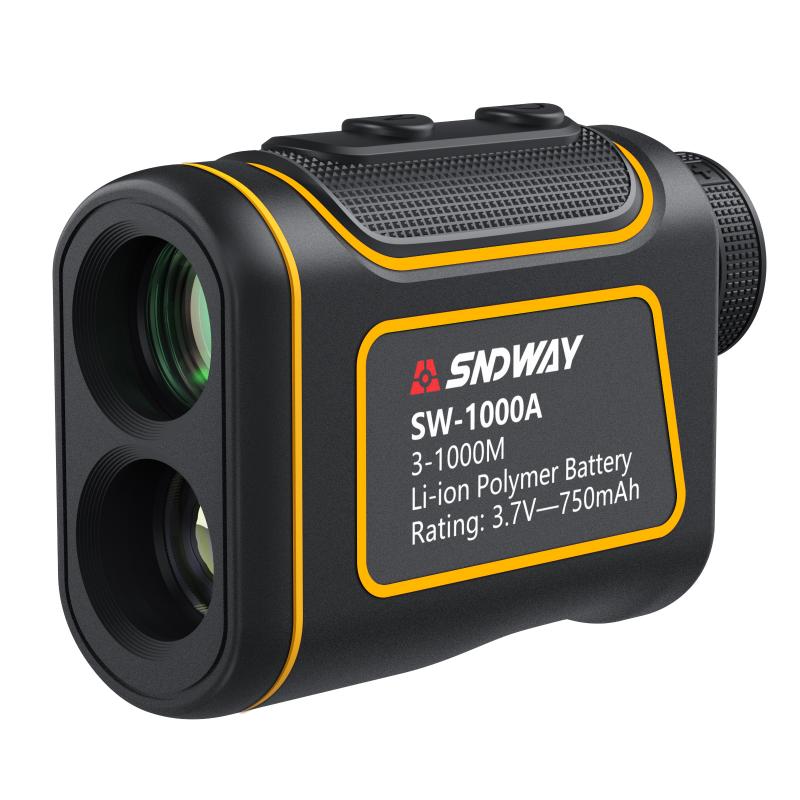
2、 Light Gathering Power: Reflectors vs. Refractors
The debate between reflector and refractor telescopes has been ongoing for years, with enthusiasts and professionals alike weighing the pros and cons of each. One crucial aspect to consider is the light gathering power of these telescopes.
In terms of light gathering power, reflector telescopes have the upper hand. This is because they use mirrors to collect and focus light, allowing for a larger aperture and thus more light to enter the telescope. The larger the aperture, the more detail and brightness can be observed. Reflector telescopes are particularly advantageous when observing faint objects such as distant galaxies or nebulae.
On the other hand, refractor telescopes use lenses to gather and focus light. While they may not have the same light gathering power as reflectors, they offer other advantages. Refractors are known for their excellent image quality and sharpness, making them ideal for observing planets and the moon. They also tend to be more compact and portable compared to reflectors.
It is important to note that advancements in technology have led to improvements in both types of telescopes. For instance, modern refractors now incorporate special coatings on their lenses to reduce light loss and increase contrast. Similarly, reflector telescopes have benefited from advancements in mirror coatings, resulting in enhanced image quality.
Ultimately, the choice between a reflector and refractor telescope depends on the specific needs and preferences of the observer. If light gathering power is a priority, reflectors are the way to go. However, if image quality and portability are more important, refractors may be the better option. It is always recommended to consider factors such as budget, intended use, and personal preferences before making a decision.

3、 Image Quality: Reflectors vs. Refractors
The debate between reflector and refractor telescopes has been ongoing for years, with enthusiasts on both sides arguing for the superiority of their preferred type. When it comes to image quality, however, it is important to consider various factors.
Refractor telescopes use lenses to gather and focus light, while reflector telescopes use mirrors. This fundamental difference can affect image quality in different ways. Refractors are known for producing sharp, high-contrast images with minimal chromatic aberration. The absence of mirrors in refractors reduces the chances of internal reflections, resulting in clearer images. However, refractors tend to be more expensive and have limitations in terms of size and aperture.
On the other hand, reflector telescopes can offer larger apertures at a more affordable price, allowing for better light-gathering capabilities. This can result in brighter and more detailed images, especially when observing faint celestial objects. However, reflectors may suffer from issues like coma and astigmatism, which can affect image quality towards the edges of the field of view.
In recent years, advancements in technology have narrowed the gap between reflectors and refractors in terms of image quality. Manufacturers have developed innovative coatings and designs to minimize the drawbacks of each type. Additionally, the availability of computerized mounts and image processing software has allowed astronomers to enhance and correct images taken with both types of telescopes.
Ultimately, the choice between a reflector and refractor telescope for superior image quality depends on individual preferences, budget, and specific observing needs. It is recommended to try out different telescopes and consult with experienced astronomers to determine the best option for your requirements.

4、 Portability and Size: Reflectors vs. Refractors
When it comes to portability and size, both reflector and refractor telescopes have their advantages and disadvantages. Reflectors, also known as Newtonian telescopes, are generally larger and bulkier compared to refractors. This is because they use mirrors to gather and focus light, which requires a larger tube to accommodate the mirror. Refractors, on the other hand, use lenses to gather and focus light, resulting in a more compact and lightweight design.
In terms of portability, refractors are often considered more convenient. Their smaller size and lighter weight make them easier to transport and set up, making them a popular choice for astronomers who frequently travel or observe in different locations. Refractors are also less prone to collimation issues, which can be time-consuming and require adjustments in reflector telescopes.
However, it is important to note that recent advancements in technology have led to the development of more compact and portable reflector telescopes. Manufacturers have introduced collapsible designs and lightweight materials, making reflectors more portable than ever before. Additionally, some reflector telescopes now come with computerized mounts and tracking systems, further enhancing their portability and ease of use.
Ultimately, the choice between a reflector and refractor telescope for portability and size depends on individual preferences and requirements. If portability is a top priority and you value a compact and lightweight design, a refractor telescope may be the better option. However, if you are willing to invest in a more portable reflector telescope with advanced features, you can still enjoy the benefits of a larger aperture and potentially better image quality.


